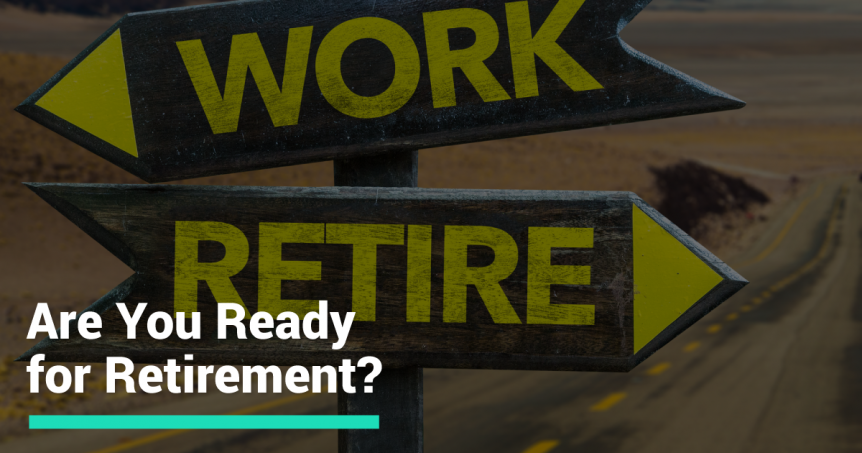Heavyweight champion and prolific pitchman, George Foreman, said, “The question isn’t at what age I want to retire, it’s at what income.” Before you turn in the keys to your office for good, you need to make sure you are prepared financially for life without a paycheck. Use this handy Retirement Preparedness Checklist and correlating worksheets to make sure you are ready:
Create Personal Financial Statements
Many of you will be tempted to guess about how much money is required to retire. It isn’t a guess. It’s math. And you can’t do the math without the numbers.
The free website, Mint.com, makes creating personal financial statements a snap. It helps you keep track of all your transactions and categorize them.
Once you have a personal income statement and balance sheet, use your current expenses to project your expenses in retirement. This is also the time to figure out what your sources of retirement income will be, how long they will last and how much will need to come from your investments.
Insure the Risks You Cannot Afford to Take
The biggest holes in the retirement puzzle are often related to healthcare. Do NOT go into retirement under-insured. Improper planning for how you will fund healthcare has the very real potential to wipe out a lifetime of work.
Our article, How to Plan for Rising Healthcare Costs, offers useful information to help you estimate costs and plan accordingly.
The most important items to plan and budget for are private health insurance if you are under age 65, Medicare and Medicare Supplement insurance if you are over age 65 and a good long-term care policy.
Many clients we work with have cash value life insurance policies they no longer need once they retire. Often, we will recommend using the built up value in those unneeded policies to fund the necessary healthcare and long-term care insurance.
Get Rid of All Bad Debt
In Kim Snider’s book, How to Be the Family CFO, she breaks debt into bad debt and better debt. Better debt is debt you use to buy an appreciating asset. Bad debt is everything else.
So, for example, better debt would include your mortgage, student loans for yourself (not for your kids), and debt to buy a business or investment. Bad debt includes home equity loans, home improvement loans, car loans and all department store and credit card debt.
Make a plan to get rid of all bad debt before you retire.
Put Away Twelve Months of Expenses in an Emergency Fund
Your emergency fund is different than savings. Savings is to pay for non-recurring one-time expenses like needing a new roof or a vacation. Emergency funds serve one purpose and one purpose only – to be a buffer when your income is disrupted.
When you are younger, disruption to your income means disruption to your paycheck. That could be as the result of disability, losing your job or needing to take time off to care for a sick or aging family member.
Once you retire and start living off your investments, the inevitable variations in the economy and financial markets will create variations in your retirement income. Your emergency fund will make those gyrations manageable. (For more on this, see “How to manage stock market volatility in retirement.”).
Create Sufficient Inflation Indexed Income to Cover Expenses
Whatever your expenses in retirement, you must have enough cash flow, from sources other than your job, to cover those expenses indefinitely into the future. For the average 65 year old, non-smoking couple, that means an average of thirty years. But remember the thing about averages – some of you will be over, others under.
You will also have to account for the effects of inflation, which most people badly underestimate. For example, assuming a 3.5% rate of inflation, a $100,000 lifestyle today, will cost approximately $206,000 twenty years from now. Your biggest risk is not the fluctuations in the stock market or the economy – it is living too long.
Diversify
At Snider Advisors, we recommend a waterfall approach to asset allocation. The first pool in the waterfall is the money in Step 5 required to create the income you need to support your lifestyle. That money’s job is cash flow.
Once you satisfy your cash flow needs, then and only then can you move on to other objectives. One objective, for example, might be protecting against hyper-inflation, in which case the next pool in your waterfall is a broad-based basket of commodities.
Once you satisfy that objective, you move down to the next objective. That may be owning an asset that is not related to the stock market. In that case, your next pool might be real estate.
The idea is to start with the highest priority, which is almost always cash flow for expenses, and then work your way down the priority list rather than trying to do everything at once and not having enough to do anything effectively.
Then you can …
Pay off your house, pay for your kid’s education, buy a second home or give away the rest of your money if you want. In other words, these are luxuries that come after you have built and paid for a solid retirement foundation.







